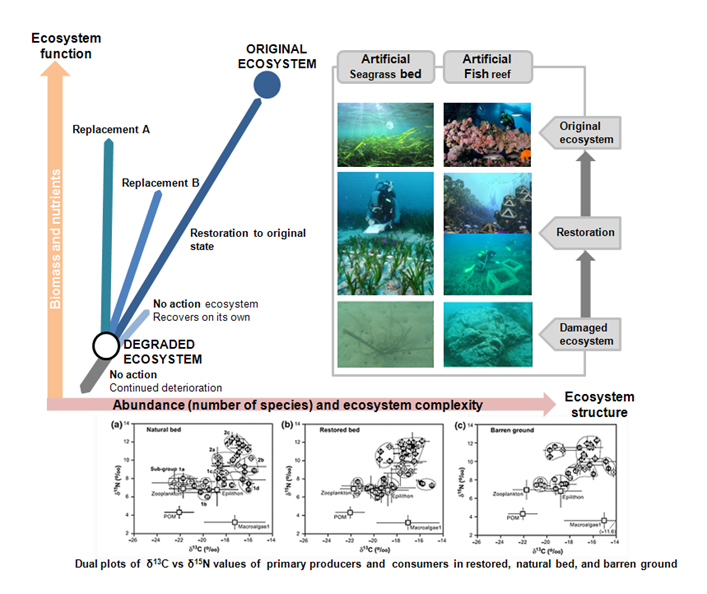Stable isotope ecology laboratory (SIEL) is a group of research scientists, graduates, and undergraduates who are in GIST (Gwangju Institute of Science & Technology).
Addressing the complex linkages and feedbacks between climate and ecological systems is one of the highest priority research areas in science as well as for human societies. One of the greatest concerns of scientists is the possibility that global changes will be too rapid for organisms to adapt and this could result in large and abrupt changes in ecosystems. More comprehensive studies are needed to address the impacts of the frequencies and intensities of disturbance regimes on marine ecosystems. This knowledge will help us to develop a better mechanistic understanding of ecosystem processes and to increase our ability to make predictions of marine ecosystem responses and feedbacks to global changes. The most important question of our previous and ongoing research has been: How do environmental changes affect structural and functional biodiversity? Individual-, population- and community-level research has focused on identifying biological and ecological processes that influence ecosystem productivity, energy and nutrient flows, sensitive life stages and behaviors of organisms and the distributions and interactions of species.
Our academic mission is to elucidate survival and adaptation strategy of marine biota and structure and function of marine ecosystem in changing environment by natural or anthropogenic forcing. Stable Isotope Ecology Laboratory also focuses on understanding energy flux and material cycle through marine biological network by observing trophic ecology and physiology of marine individual, community and ecosystem. We use biogeochemical, biochemical, histological, and statistical tools to cover a wide range of biological organization and diverse types of coastal ecosystem. Here are our primary ecological themes of the laboratory:
The SIEL uses stable carbon and nitrogen isotope tracers to further understanding of trophic structures and the functions of individual trophic groups in marine food webs. Using the isotope tracers, we track the origin of organic matter utilized by consumer species and analyze trophic levels in different food webs;
The goals of our research also include identifying adaptive strategies of particular organism species to changing environments by measuring changes in biochemical composition and diet consumption/energy allocation. In this study, equations of relationships among variables as respiration and assimilation influenced by environmental conditions can be developed; then the results can be applied to ecophysiological modeling.;
In marine ecosystems, planktonic food webs play a vital role in transferring energy to higher trophic levels. By linking primary productivity with physical and chemical structures in water column, change in material cycling in marine ecosystems due to climate change is assessed. In addition, Phytoplankton contributions to fauna food webs are assessed on the basis of phytoplankton community structures are identified by chemotaxonomic (HPLC) analyses and the size fractionation (flow-cytometric) analysis;
The creation of artificial ecosystems has been made to renew the destroyed marine ecosystems. By studying community and food web structures in restored ecosystems, Species diversity and ecological functions can be identified. Material cycling processes in both natural and artificial habitats are analyzed, and ecological function of restored artificial habitats is examined using stable isotope techniques.
 Biological responses to environmental changes
Biological responses to environmental changes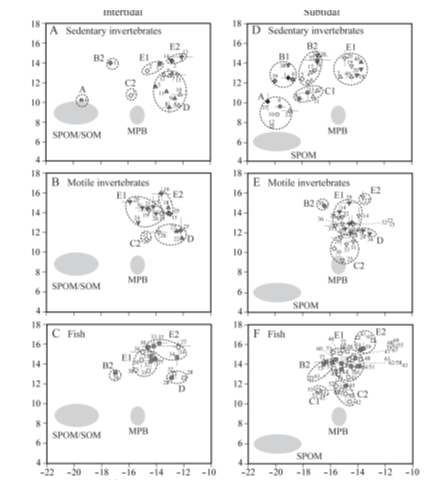 Stable isotopes revealed a consumer-mediated transport of intertidal benthic microalgal carbon
Stable isotopes revealed a consumer-mediated transport of intertidal benthic microalgal carbon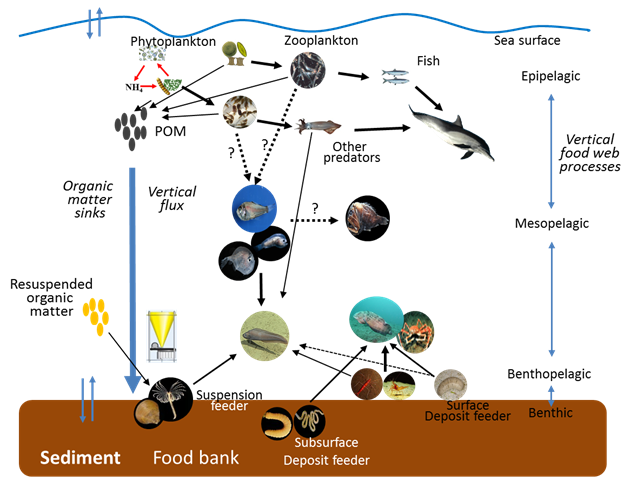 The expected food web pathways and material cycling in the East Sea/Japan Sea
The expected food web pathways and material cycling in the East Sea/Japan Sea Major sea areas for expedition
Major sea areas for expedition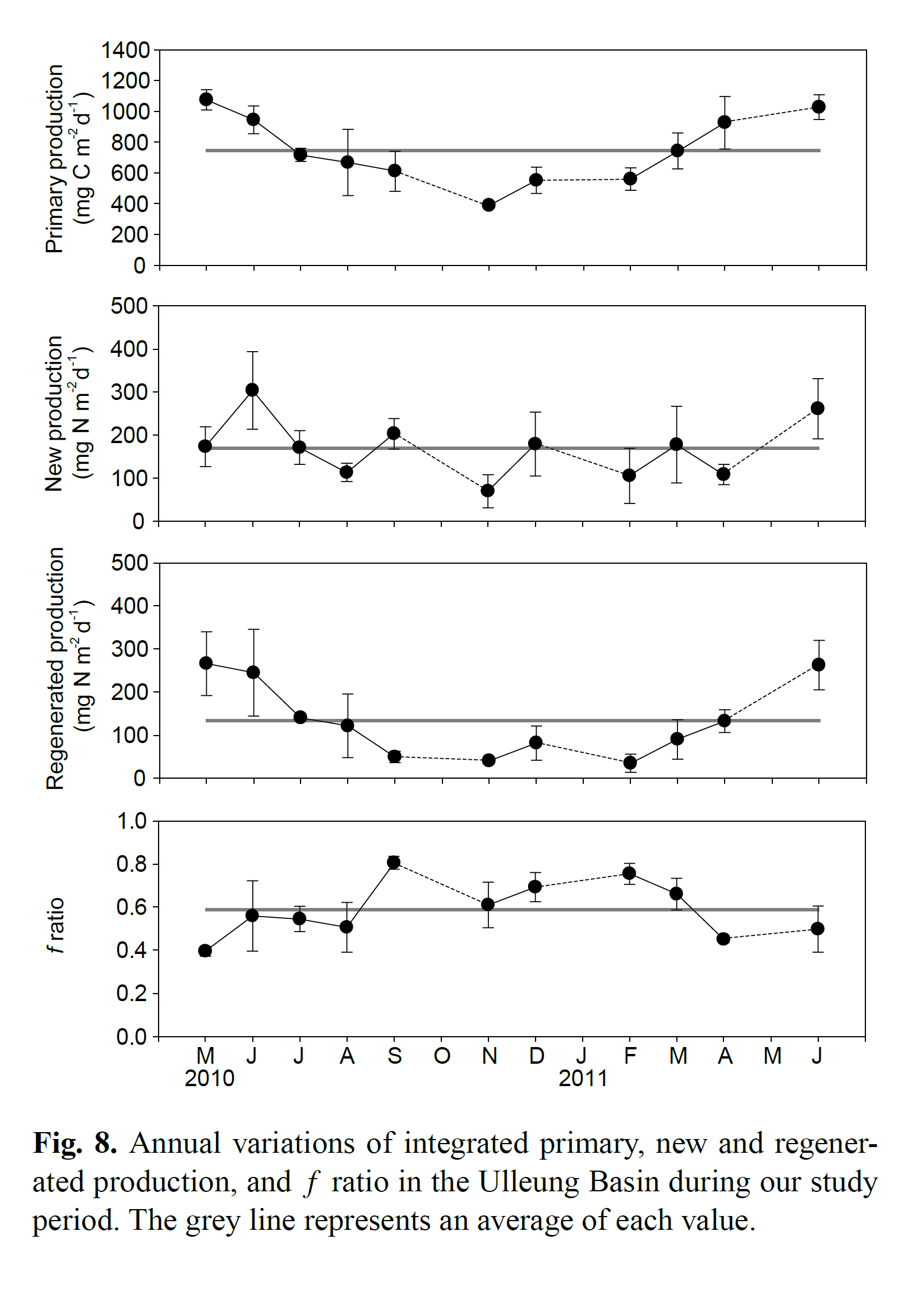 A high annual primary production in the Ulleung Basin of the East/Japan Sea
A high annual primary production in the Ulleung Basin of the East/Japan Sea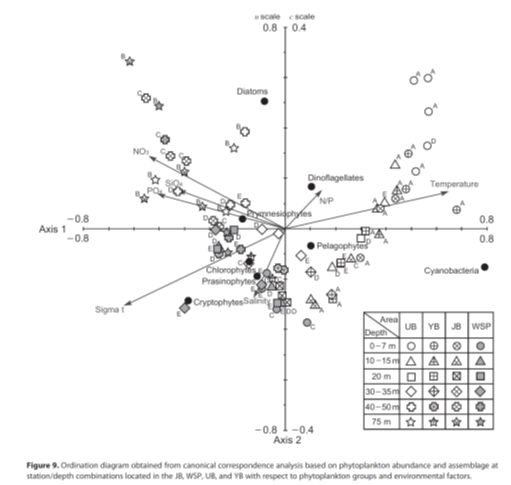 CCA analysis showed unique characteristics in phytoplankton distribution of the East/Japan Sea
CCA analysis showed unique characteristics in phytoplankton distribution of the East/Japan Sea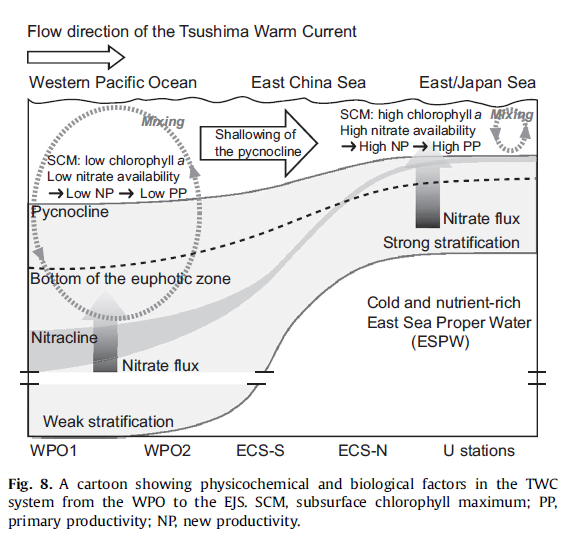
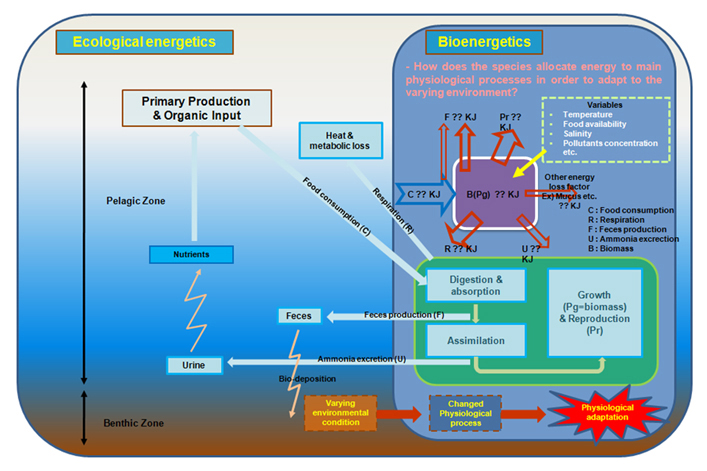
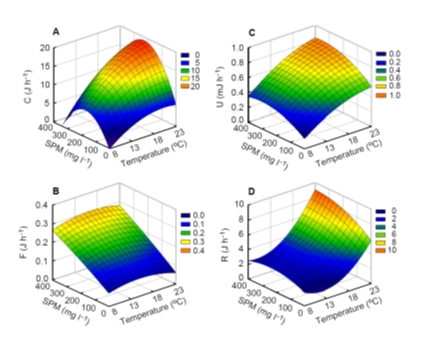 Physiological responses of the clam to both temperatures and seston concentrations
Physiological responses of the clam to both temperatures and seston concentrations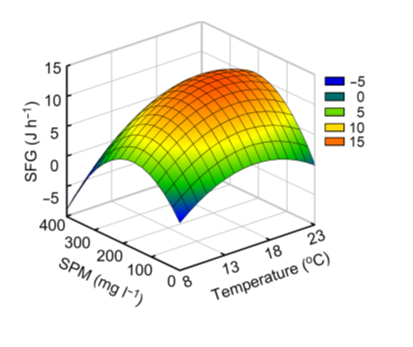 Physiological energetics of the clam
Physiological energetics of the clam
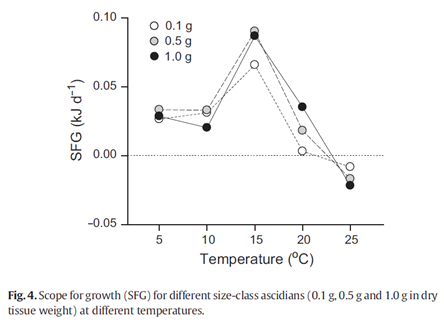
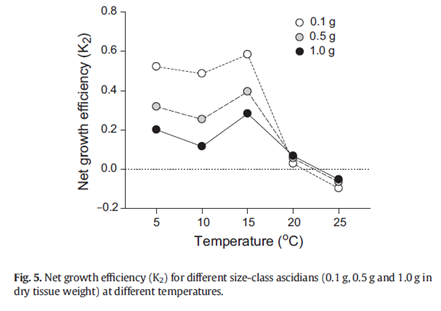
 Warming of the sea changes ecological physiology of marine invertebrates:
Warming of the sea changes ecological physiology of marine invertebrates: